Art World
A Show in Turin Co-Curated by Liam Gillick Asks Why We Are (Probably) Doomed to Keep Repeating Our Mistakes
The Nietzsche-inspired show has been a hit in Turin.

The Nietzsche-inspired show has been a hit in Turin.

Naomi Rea

This year of political upheaval feels like a timely moment to revisit Friederich Nietzsche’s ideas about the ancient philosophy of eternal recurrence. He popularized the idea that history is bound to repeat itself infinitely, as evidenced in part through the repeated impulse to make and collect art throughout the rise and fall of various civilizations.
Perhaps that’s why the large-scale group show “Like a Moth to a Flame,” organized by artist Liam Gillick, curator Tom Eccles, and ArtReview editor-in-chief Mark Rappolt, has been one of this year’s most buzzed about shows in Turin—the city where Nietzsche famously descended into madness.
On view across two venues through January 14, “Like a Moth to a Flame” marks the inauguration of a new contemporary art space in a converted train repair workshop, the Officine Grandi Riparazioni, and the 25th anniversary of the Fondazione Sandretto Re Rebaudengo.
Through more than 70 works by contemporary artists such as Damien Hirst and Hito Steyerl as well as hundreds of artifacts, including ancient Egyptian artifacts, the show offers a portrait of the city through the objects collected by its residents. The works, on loan from Turin’s Foundation for Modern and Contemporary art CRT, the Sandretto Re Rebaudengo collection, and local museums, reveal the various ways that lives can be represented and understood in a single place.
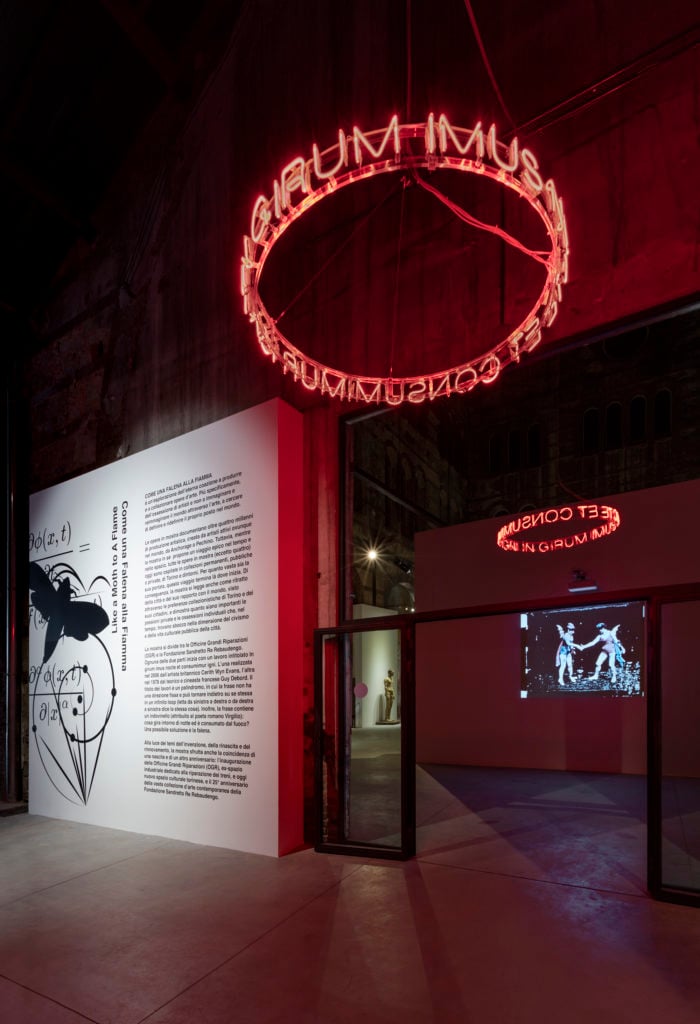
Installation view, “Like a Moth to a Flame.” Cerith Wyn Evans In girum imus nocte et consumimur igni (2006). Photo by Andrea Rossetti, courtesy of OGR.
The show’s title comes from a 2006 work by British artist Cerith Wyn Evans in which a Latin riddle takes the form of a neon chandelier. Both Evans’s riddle and the curators were inspired by French Situationist Guy Debord’s 1978 film of the same title, so it is fitting that this greets visitors at the entrance of the exhibition.
The riddle is a palindrome that reads “In girum imus nocte et consumimur igni,” (it goes around at night and is consumed by flames). One possible answer is a moth, a creature drawn to flames in a similar way that some people are drawn to art, and perhaps more obliquely, how we all are prone to repeating our mistakes.
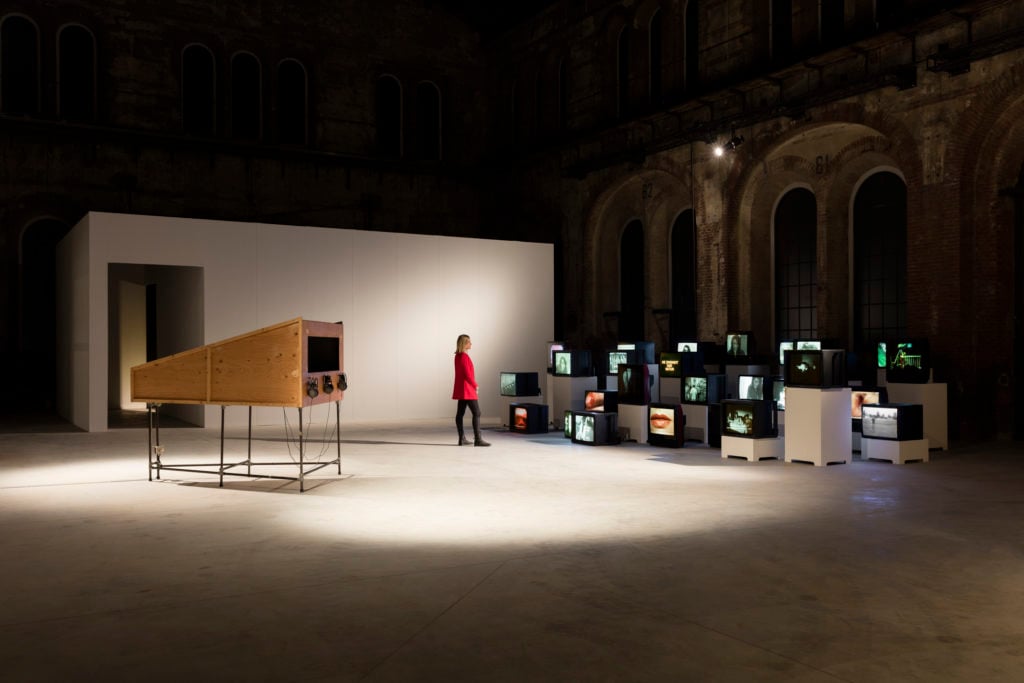
Installation view of Valie Export’s Metanoia (1968/2000). Photo by Andrea Rossetti, courtesy of Galleria d’Arte Moderna e Contemporanea, Turin
Further in, an installation comprising 29 video performances from 1968 to 2010 by the Austrian feminist artist Valie Export continues this narrative, questioning the power relations inherent in media and society that repeatedly subjugate women’s bodies and minds.
Export took the name of a popular brand of cigarettes for her surname after deciding to shed her father’s and husband’s names in 1967. Her early guerrilla performances and film work can in some ways be seen as a precursor to the “Bechdel test” in their questioning of women’s passive roles in cinema, and this might prompt a viewer to wonder how many times the same realization must occur, and be represented and collected in art, before change is actually implemented.

Paola Pivi, Have you seen me before? (2008). From Fondazione Sandretto Re Rebaudengo Collection, Turin. Photo courtesy OGR.
Elsewhere, Paola Pivi’s charming feathery polar bear, titled Have you seen me before?, demonstrated the show’s premise most wonderfully: The work was constantly obscured by a gaggle of Instagramming Italians, drawn to it like moths to this feathery flame.
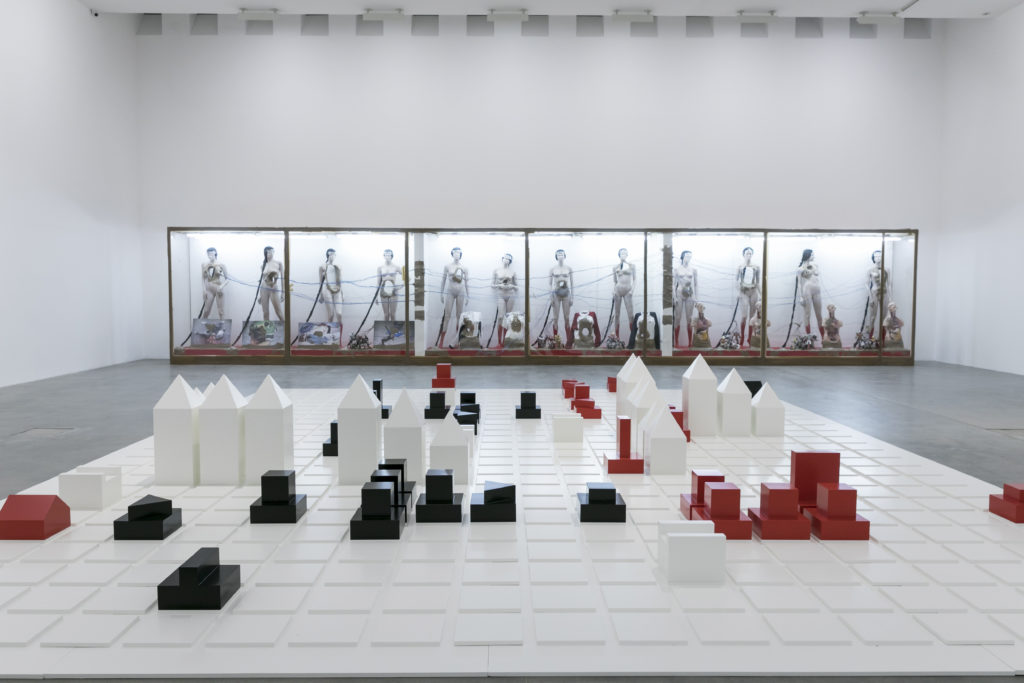
The portion of the exhibition staged at the foundation of Turin’s collecting powerhouse Patrizia Sandretto Re Rebaudengo offers a darker, more political take on the idea of eternal return and humankind’s enduring inclination toward self-destruction.
One room features a chess-inspired war game by Liam Gillick, in another take on Guy Debord, who developed the Kriegspiel (war game) after studying Napoleon’s European campaigns. Behind the life-size chess board appear a disturbing array of mannequins by Thomas Hirschhorn, a grisly line up of mutilated bodies, as well as macabre war photographs.
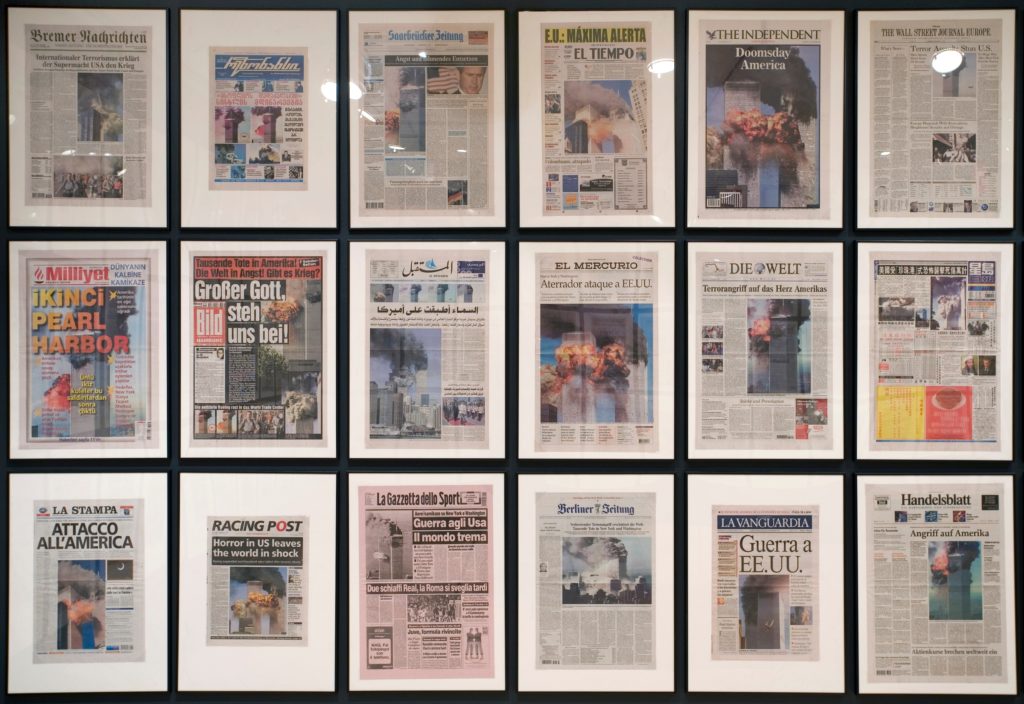
Detail of Hans-Peter Feldmann’s 9/12 Frontpage (2001). Courtesy of Fondazione Sandretto Re Rebaudengo.
The theme continues with the German artist Hans-Peter Feldmann’s striking installation 9/12 Frontpage, an archive that offers a look at another type of collecting. Feldmann fills an entire room with 151 front pages of newspapers from around the world taken the day after the 9/11 attacks in New York.
Although many carry the same image of the towers burning, only a few mention terror, and fewer still mention “Islamist” terror, which, given the Islamophobic rhetoric surrounding the attacks in Trump’s America, prompts a reflection on how history is made, and how powerful figures manipulate emotional vulnerabilities for political ends.
“Like a Moth to a Flame” is on until January 14 at OGR–Officine Grandi Riparazioni, Corso Castelfidardo 22, Turin, and at Fondazione Sandretto Re Rebaudengo, Via Modane 16, Turin.
See More images from the exhibition below.
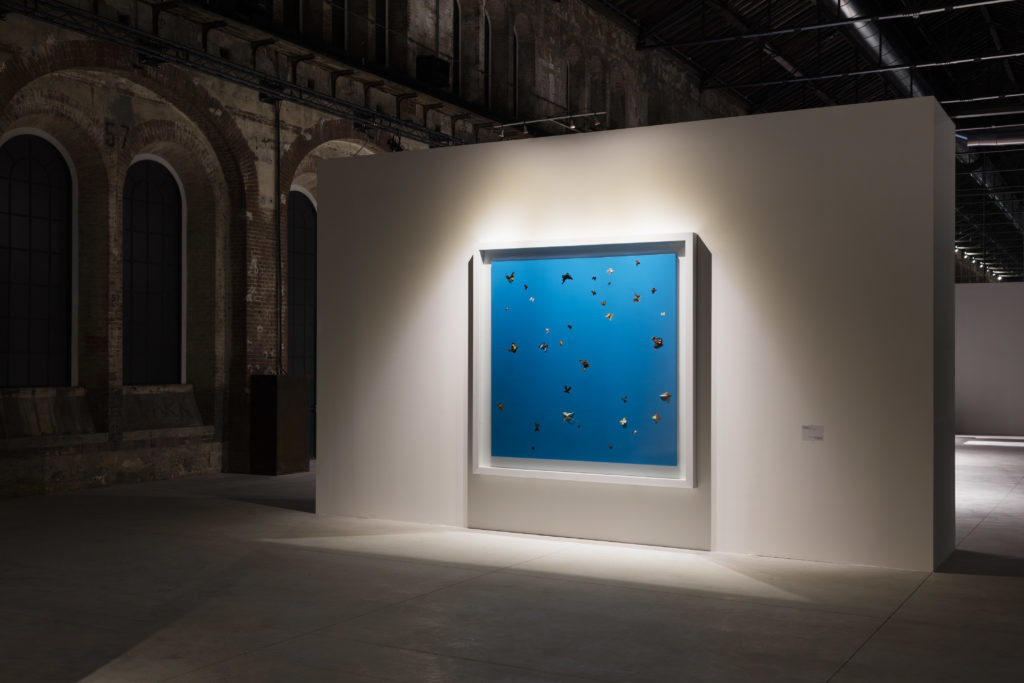
Damien Hirst, Love is Great (1994). From Fondazione Sandretto Re Rebaudengo Collection, Turin. Photo courtesy of OGR.
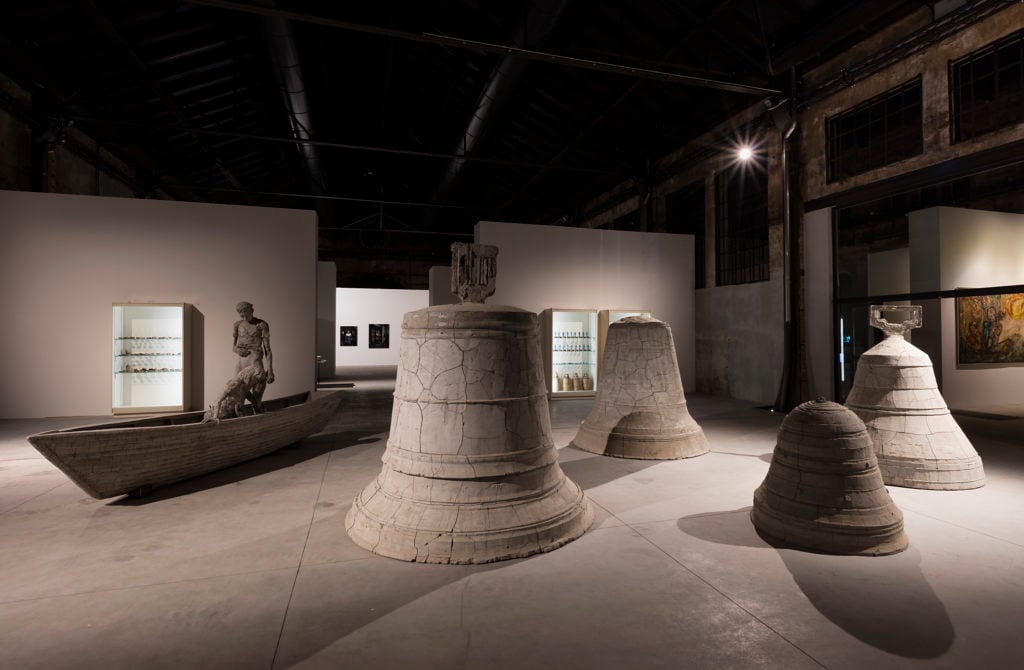
Installation view of “Like a Moth to a Flame.” Photo: Andrea Rossetti, courtesy of OGR.
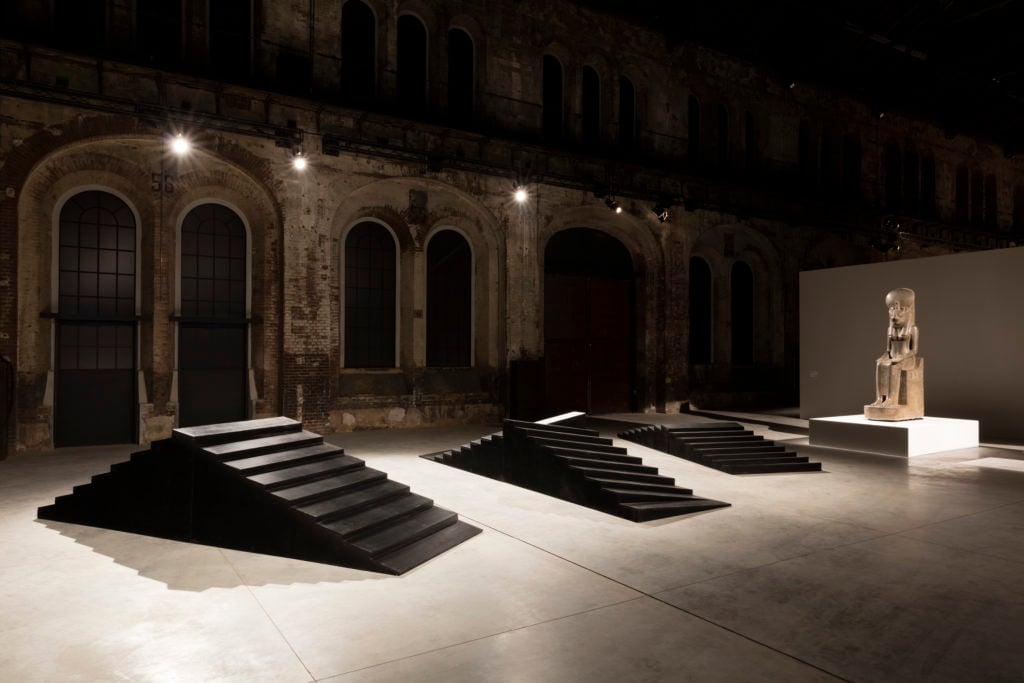
Installation view of “Like a Moth to a Flame.” Photo: Andrea Rossetti, courtesy of OGR.
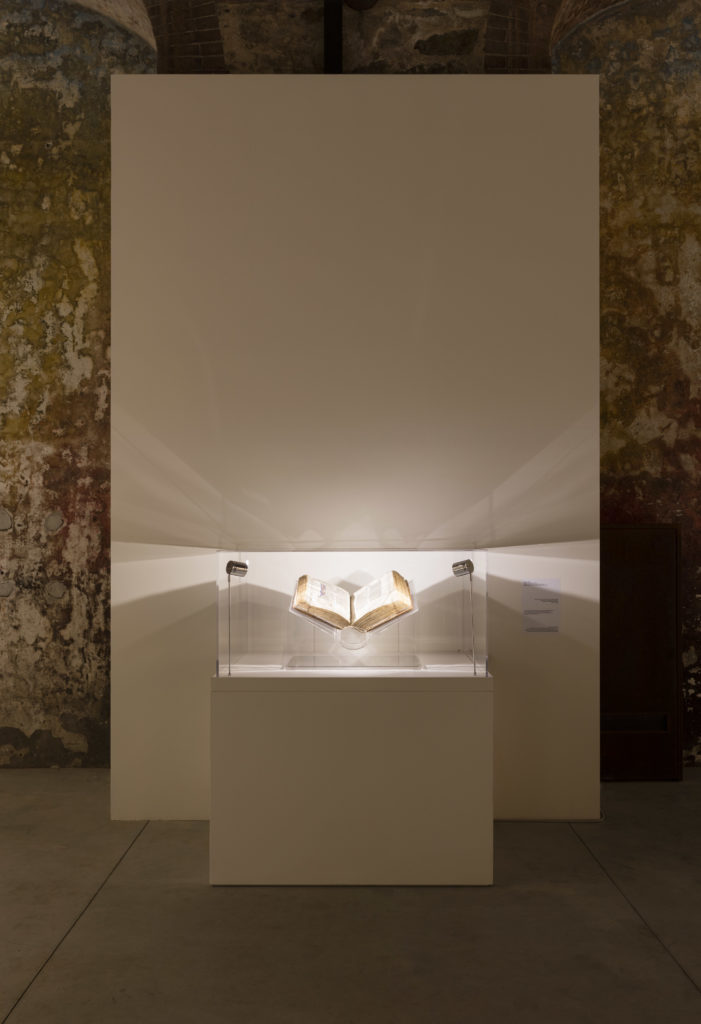
Anonymous Bolognese miniaturist, Bible (c1280). From Palazzo Madama Museo Civico d’Arte Antica, Turin. Photo courtesy of OGR.
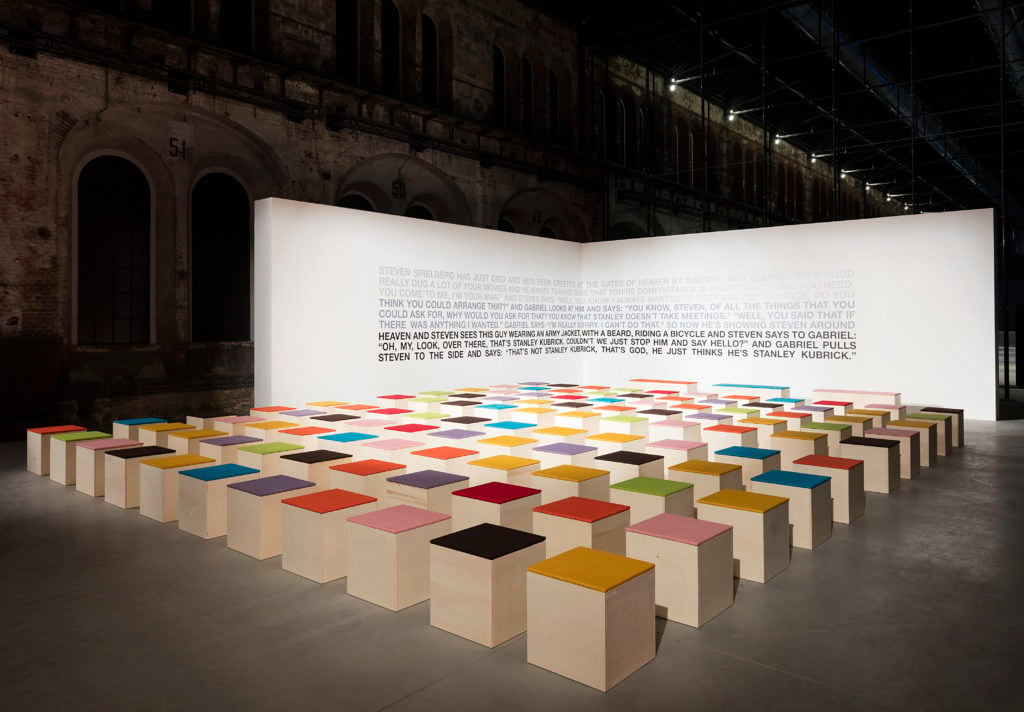
Liam Gillick, Prototype Design for Conference Room (With Joke by Matthew Modine arranged by Markus Weisbeck) (1999/2017). From Fondazione Sandretto Re Rebaudengo Collection, Turin.

Ragnar Kjartansson, The End – Rocky Mountains (2009).
Still from the 5-channel video installation. ©Ragnar Kjartansson. Photo courtesy of the artist, Luhring Augustine, New York, i8 Gallery, Reykjavik, Fondazione Sandretto Re Rebaudengo Collection.